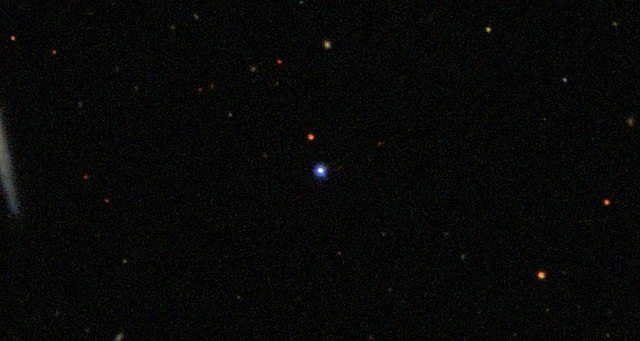TON 618 is a hyperluminous, broad-absorption-line, radio-loud quasar and Lyman-alpha blob located near the border of the constellations Canes Venatici and Coma Berenices, with the projected comoving distance of approximately 18.2 billion light-years from Earth. It possesses one of the most massive black holes ever found, at 40.7 billion M☉.
|1089px|alt=
]]
Size comparison of the event horizons of the black holes of TON 618 and Phoenix A. The orbit of Neptune (white oval) is included for comparison.
A computer simulated close-up view of a Lyman-alpha blob. A similar gas cloud is present at TON 618.
In astronomy, a Lyman-alpha blob (LAB) is a huge concentration of a gas emitting the Lyman-alpha emission line. LABs are some of the largest known individual objects in the Universe. Some of these gaseous structures are more than 400,000 light years across. So far they have only been found in the high-redshift universe because of the ultraviolet nature of the Lyman-alpha emission line. Since Earth's atmosphere is very effective at filtering out UV photons, the Lyman-alpha photons must be redshifted in order to be transmitted through the atmosphere.
The giant Lyman-alpha blob LAB-1 (left) and an artist's impression of what it might look like if viewed from relatively close (right).
Composite of two different images taken with the FORS instrument on the Very Large Telescope of the Lyman-alpha blob LAB-1 in the constellation of Aquarius. Credit ESO/M. Hayes.





